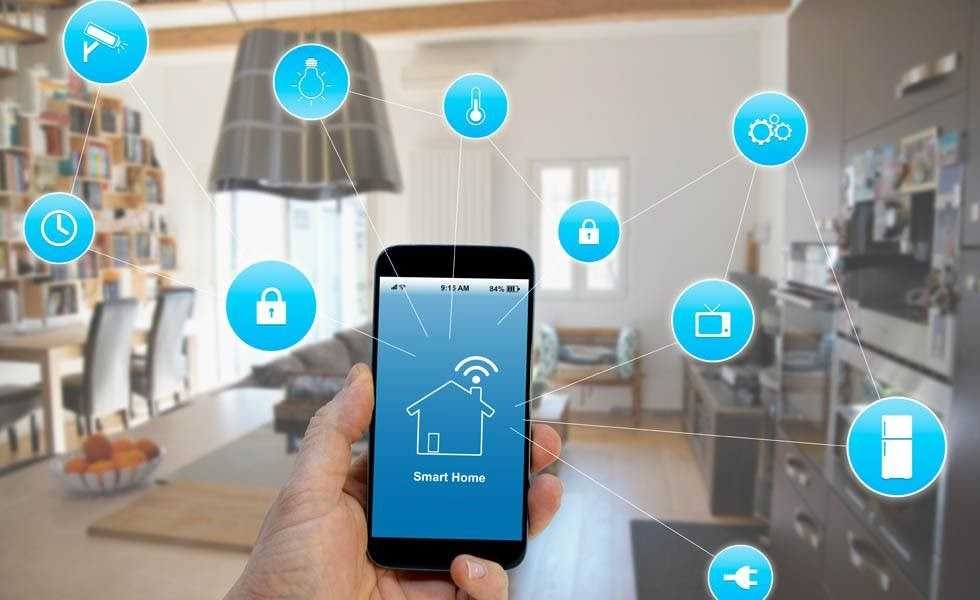Table of Contents
Smart Home In the era of connectivity and convenience, the concept of a Smart Home represents the pinnacle of modern living. From automated lighting and intelligent thermostats to voice-controlled assistants, Smart Home technology revolutionizes how we interact with our living spaces. This comprehensive guide explores the essentials of creating a Smart Home, delving into the intricacies of the Internet of Things (IoT) and how it enhances everyday life.

Understanding the Smart Home Ecosystem
What is a Smart Home?
A Smart Home integrates devices and appliances that are connected to the internet, enabling remote management and automation. These devices communicate with each other through a centralized hub or network, allowing homeowners to control them from smartphones or other smart devices.
Components of a Smart Home
- Smart Devices: These include smart bulbs, plugs, cameras, locks, thermostats, and appliances that connect to the internet and can be controlled remotely.
- Hub or Controller: Acts as the central command center that connects and manages all Smart Home devices. Examples include Amazon Echo, Google Nest Hub, or dedicated smart home hubs.
- Network: A reliable Wi-Fi or Bluetooth network is essential for seamless communication between Smart Home devices and the controlling hub.
Benefits of a Smart Home
Convenience and Accessibility
The primary allure of a Smart Home lies in its convenience. Homeowners can remotely control devices, adjust settings, and monitor activities with ease using smartphone apps or voice commands. For instance, adjusting room temperature before arriving home or turning off lights from bed enhances daily comfort and efficiency.
Energy Efficiency
Smart Home technology promotes energy conservation by automating systems based on occupancy, weather conditions, or predefined schedules. Smart thermostats optimize heating and cooling, while energy-efficient lighting systems reduce electricity consumption without sacrificing comfort or convenience.
Enhanced Security
Integrated security systems offer peace of mind through real-time monitoring and alerts. Smart cameras, motion sensors, and door locks provide remote access and notifications, allowing homeowners to monitor their property and respond promptly to potential threats or emergencies.
Key Technologies Powering Smart Home Innovation
1. Internet of Things (IoT)
The backbone of Home technology, IoT enables devices to connect, communicate, and exchange data over the internet. This interconnected ecosystem forms the foundation for automation, remote control, and data-driven insights that enhance daily living.
2. Artificial Intelligence (AI)
AI enhances Smart functionality by learning from user interactions and data patterns to anticipate needs and optimize device performance. AI-powered assistants, like Amazon Alexa or Google Assistant, interpret voice commands, manage schedules, and even suggest energy-saving strategies based on usage patterns.
3. Wireless Connectivity Standards
Technological standards such as Zigbee, Z-Wave, and Bluetooth Low Energy (BLE) facilitate seamless communication between Home devices and hubs. These protocols ensure compatibility, reliability, and low power consumption, essential for a robust Smart infrastructure.
Building Your Smart Home
Step-by-Step Implementation
- Assess Needs: Identify areas where Home technology can enhance daily routines, improve efficiency, or address specific concerns like security or energy management.
- Choose Devices: Select Smart devices based on functionality, compatibility with existing systems, and integration capabilities with preferred control platforms (e.g., Amazon Alexa, Apple HomeKit).
- Setup and Integration: Install devices according to manufacturer instructions, connect them to the designated hub or network, and configure settings through associated apps or interfaces.
- Automation and Customization: Program automated routines, schedules, or scenes that align with household activities and preferences. Customize settings to maximize convenience and energy efficiency.
Applications of Smart Home Technology
1. Home Automation
Automated tasks, such as adjusting lighting based on natural light levels or scheduling appliances to operate during off-peak hours, streamline daily routines and reduce manual intervention.
2. Entertainment and Multimedia
Integrate Home technology with entertainment systems to control audiovisual equipment, streaming services, and gaming consoles effortlessly. Voice commands or centralized controls enhance the entertainment experience.
3. Health and Wellness Monitoring
Smart devices can monitor health metrics like air quality, humidity levels, and even sleep patterns. Connected wearables or sensors provide valuable insights to promote wellness and improve indoor air quality.
Future Trends in Smart Home Evolution
1. Expansion of AI Applications
Advancements in AI will enable more sophisticated interactions and predictive capabilities within Home environments. Personalized recommendations, proactive maintenance alerts, and adaptive automation are on the horizon.
2. Integration with Smart Cities
Smart ecosystems may extend to broader urban environments, integrating with municipal services for enhanced security, energy management, and sustainability initiatives.
Challenges and Considerations
1. Privacy and Security
Securing Home devices against cyber threats and protecting user data remains a critical concern. Implementing robust encryption, regularly updating firmware, and monitoring network activity mitigate potential risks.
2. Compatibility and Interoperability
Ensuring compatibility between Smart Home devices from different manufacturers and adherence to industry standards promotes seamless integration and enhances user experience.
Smart Home
The evolution of Smart Home technology signifies a transformative shift towards interconnected living spaces that prioritize efficiency, comfort, and sustainability. By leveraging IoT, AI, and advanced connectivity standards, homeowners can create personalized environments that adapt to their lifestyles and enhance everyday living. Whether enhancing security measures, optimizing energy usage, or simply enjoying the convenience of automated routines, embracing the Smart revolution empowers individuals to redefine how they interact with their homes and the world around them.




More Stories
Elevate Your Efficiency: Streamlining Processes with IBM IoT Technology
Maximize Efficiency: How Private Cellular Networks Transform Operations
How to Learn Android App Development and Innovate